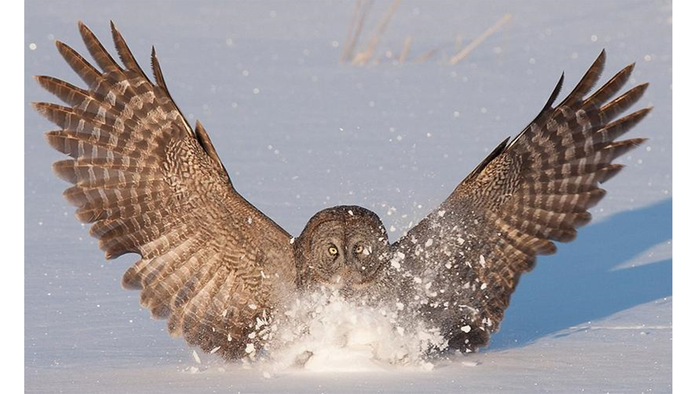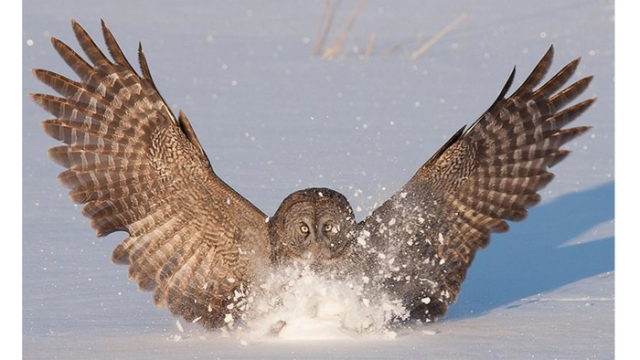
Owls are able to swiftly and silently swoop down on their prey thanks to the noise-suppressing characteristics of their wings. Scientists hope to emulate these features to create quieter airplanes and wind turbines.
The sound of air rushing over the trailing edge of wings is the dominant noise produced by aeronautical and turbine engines, contributing to noise pollution, particularly in urban areas. Looking to nature for a solution, researchers believe the characteristics of owl wings could transform the design of airfoils and minimize trailing-edge noise.
Xiaomin Liu of Xi’an Jiaotong University, one of the authors of a study appearing in Physics of Fluids, described how owls are adept silent killers.
“Nocturnal owls produce about 18 decibels less noise than other birds at similar flight speeds due to their unique wing configuration,” he said. “Moreover, when the owl catches prey, the shape of the wings is also constantly changing, so the study of the wing edge configuration during owl flight is of great significance.”

When air flows over the back of an airfoil, it creates turbulence along its upper and lower surfaces. When the air flows back through an airfoil’s trailing edge, it radiates noise. While older studies found that using serrated trailing edges could reduce the noise signatures of rotating machinery, the reduction of noise was not universal and depended on the final application.
Owls, like other birds, have various kinds of feathers. Unlike other birds, owls’ primary feathers are uniquely able to reduce turbulence over their wings because of their comb-like serrations. These serrations muffle the sound of the airflow, shifting the angle at which air flows. Air is allowed to pass through them, eliminating sound. It is possible that the feathers also shift the sound of the airflow to a higher frequency that most animals cannot hear.
Additionally, owls’ secondary feathers have a soft fringe that reduces turbulence behind the wings. With tattered feathers on the trailing edge of the wing and downy feathers on the legs and the rest of the wing, sound waves are broken up. The fluttery, downy feathers absorb any remaining in-flight noise. The down absorbs frequencies measuring above 2,000 hertz, thus eliminating sounds that would alert owls’ hapless prey.

Admitting that current technology to reduce airfoil noise has reached a “bottleneck,” Liu said, “The noise reduction capabilities of conventional saw tooth structures are limited, and some new non-smooth trailing-edge structures need to be proposed and developed to further tap the potential of bionic noise reduction.”
After conducting theoretical studies of airfoils with the characteristics of owl wings, the research team applied their data to limit the noise level of rotating machinery. They found that asymmetric serrations reduced noise more than symmetric serrations. Different operating conditions saw varied levels of noise reduction. Thus, the researchers suggest that future airfoil designs should be tested according to the specific application required.
Wind turbines, for example, have very complex incoming flow environments, which require a more general noise-reduction technology. Designers would need to try different techniques for noise reduction based on varied incoming flows to apply the results of the study.
The noise generated by wind turbines has been a source of controversy. In the south of France, for example, a court recognized in November 2021 that a couple suffered from “turbine syndrome.” The pair claimed that the wind turbine noise had caused depression, dizziness, headaches, insomnia and tinnitus for over two years.
Without precedent, a court in Toulouse awarded them more than 100,000 euros ($113,000) in compensation. When a forest was cut down near their home in 2013, the effective natural sound screen was eliminated between them and the wind turbines 2,300 feet away, exacerbating the effect on the couple’s health.
Edited by Siân Speakman and Kristen Butler
Recommended from our partners
The post Owl’s About That? Owl Wings Inspire Quieter Airfoil Design appeared first on Zenger News.





